 W
WThe United States Army Acquisition Corps (AAC) is the officer corps of the United States Army Acquisition Workforce (AAW). The Acquisition Corps is composed of army officers who serve in acquisition, a specialized form of product development, fielding, and support. These officers begin their careers in the other branches of the army for eight years, after which they may elect the Acquisition branch as their career as assistant program managers (APMs), program managers (PMs), and program executive officers (PEOs). Four percent of the 40,000 members of the army acquisition workforce are army officers; the remainder are largely civilians, with some contingency contracting NCOs for urgent or emergency contracts.
 W
WThe Adjutant General's Corps, formerly the Adjutant General's Department, is a branch of the United States Army first established in 1775. This branch specializes in personnel service support encompassing essential human resources support, personnel accountability, casualty liaison, postal operations, music, recruiting and retention, command interest programs, and other administrative functions at all echelons of the U.S. Army.
 W
WThe Air Defense Artillery branch is the branch of the United States Army that specializes in anti-aircraft weapons. In the U.S. Army, these groups are composed of mainly air defense systems such as the Patriot Missile System, Terminal High Altitude Area Defense (THAAD), and the Avenger Air Defense system which fires the FIM-92 Stinger missile.
 W
WThe Aircraft Warning Corps (AWC) was a World War II United States Army Air Force organization for Continental United States air defense. The corps' information centers networked an area's "Army Radar Stations" which communicated radar tracks by telephone, and the information centers also integrated visual reports processed by Ground Observer Corps filter centers. The AWC notified air defense command posts of the First Air Force, Second Air Force, Third Air Force, and Fourth Air Force. These command posts would deploy interceptors which used command guidance to achieve ground-controlled interception.
 W
WThe Armor Branch of the United States Army is an active combat arms branch.
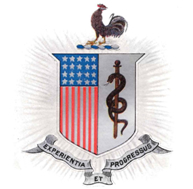 W
WThe regimental coat of arms of the Army Medical Department of the United States Army—known as the AMEDD—is an heraldic emblem dating back, with slight variations, to about 1863. Since 1986, it has formed the basis of the AMEDD's distinctive unit insignia: the emblem worn by all AMEDD soldiers on their service uniforms.
 W
WThe United States Cavalry, or U.S. Cavalry, was the designation of the mounted force of the United States Army by an act of Congress on 3 August 1861. This act converted the U.S. Army's two regiments of dragoons, one regiment of mounted riflemen, and two regiments of cavalry into one branch of service. The cavalry branch transitioned to the Armored Forces with tanks in 1940, but the term "cavalry", e.g. "armored cavalry", remains in use in the U.S. Army for mounted reconnaissance, surveillance, and target acquisition (RSTA) units based on their parent Combat Arms Regimental System (CARS) regiment. Cavalry is also used in the name of the 1st Cavalry Division for heraldic/lineage/historical purposes. Some combined arms battalions are designated as armor formations, while others are designated as infantry organizations. These "branch" designations are again, heraldic/lineage/historical titles derived from the CARS regiments to which the battalions are assigned.
 W
WThe Chaplain Corps of the United States Army consists of ordained clergy of multiple faiths who are commissioned Army officers serving as military chaplains as well as enlisted soldiers who serve as assistants. Their purpose is to offer religious church services, counseling, and moral support to the armed forces, whether in peacetime or at war.
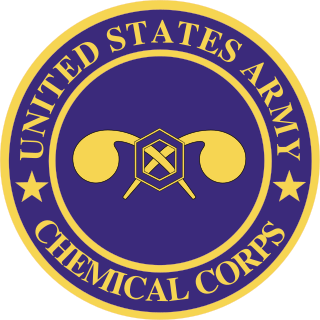 W
WThe Chemical Corps is the branch of the United States Army tasked with defending against chemical, biological, radiological, and nuclear (CBRN) weapons. The corps was founded as the U.S. Chemical Warfare Service (CWS) during World War I. Its name was changed to the Chemical Corps in 1946. For most of its history, the Chemical Corps was tasked with delivering chemical weapons rather than defending against them.
 W
WThe U.S. Army Coast Artillery Corps (CAC) was an administrative corps responsible for coastal, harbor, and anti-aircraft defense of the United States and its possessions between 1901 and 1950. The CAC also operated heavy and railway artillery during World War I.
 W
WThe United States Army Counter Intelligence Corps was a World War II and early Cold War intelligence agency within the United States Army consisting of highly trained Special Agents. Its role was taken over by the U.S. Army Intelligence Corps in 1961 and, in 1967, by the U.S. Army Intelligence Agency. Its functions are now performed by its modern-day descendant organization; United States Army Counterintelligence. The National Counter Intelligence Corps Association (NCICA), a veterans' association, was established in the years immediately following World War II by Military Intelligence agents who had served in every area of military and domestic operations. The organization meets annually. Its newsletter, the Golden Sphinx, is published quarterly.
 W
WThe Army Medical Department of the U.S. Army (AMEDD), formerly known as the Army Medical Service (AMS), encompasses the Army's six medical Special Branches. It was established as the "Army Hospital" in July of 1775 to coordinate the medical care required by the Continental Army during the Revolutionary War. The AMEDD is led by the Surgeon General of the U.S. Army, a lieutenant general.
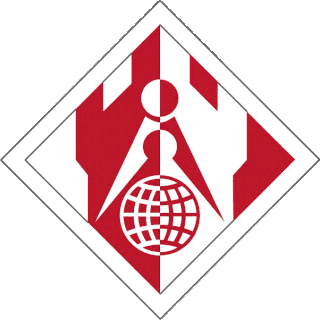 W
WThe United States Army Corps of Engineers (USACE) is an engineer formation of the United States Army that has three primary mission areas: engineer regiment, military construction, and civil works. The day-to-day activities of the three mission areas are administered by a lieutenant general known as the commanding general/chief of engineers. The chief of engineers commands the engineer regiment, composed of combat engineer army units, and answers directly to the chief of staff of the army. Combat engineers come from throughout the service and can be active duty, national guard, or army reserve. Combat engineers duties are to construct fighting positions, fixed/floating bridges, and obstacles and defensive positions, place and detonate explosives (sappers), conduct operations that include route clearance of obstacles and rivers, prepare and install firing systems for demolition and explosives, and detect mines. For the military construction mission the commanding general is directed and supervised by the assistant secretary of the army for installations, environment, and energy, whom the President appoints and the Senate confirms. Military construction relates to construction on military bases and worldwide installations.
 W
WThe Field Artillery Branch is a combat arms branch of the United States Army.
 W
WThe United States Army Finance Corps is a combat service support (CSS) branch of the United States Army. The Finance Corps traces its foundation to 16 June 1775, when the Second Continental Congress established the office of Paymaster General of the Army. The Pay Department became a separate department in 1816, and the Finance Department was created by law on 1 July 1920. It became the Finance Corps in 1950. It is responsible for financial operations, most notably payroll and resource management. It is the smallest branch of the Army.
 W
WThe Infantry Branch is a branch of the United States Army first established in 1775.
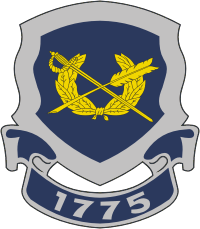 W
WThe Judge Advocate General's Corps of the United States Army, also known as the U.S. Army JAG Corps, is the legal arm of the United States Army, established on 29 July 1775 by General George Washington. The Corps is composed of Army officers who are also lawyers and who provide legal services to the Army at all levels of command, and also includes legal administrator warrant officers, paralegal noncommissioned officers and junior enlisted personnel, and civilian employees.
 W
WThe officer-only Logistics branch of the United States Army was introduced as part of the creation of a Logistics Corps encompassing the three long-established functional logistics branches of Quartermaster, Ordnance, and Transportation. Established on 1 January 2008, all Active, Reserve, and National Guard Ordnance, Quartermaster and Transportation Corps officers who had completed the Logistics Captains Career Course or earlier versions of an advanced logistics officers course were transferred to the new branch. This move changed the Functional Area 90 program into an Army basic branch. Logistics officers maintain their regimental affiliations with their prior branches.
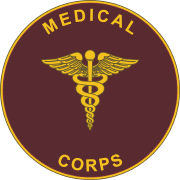 W
WThe Medical Corps (MC) of the U.S. Army is a staff corps of the U.S. Army Medical Department (AMEDD) consisting of commissioned medical officers – physicians with either an M.D. or a D.O. degree, at least one year of post-graduate clinical training, and a state medical license.
 W
WThe Army Medical Department of the U.S. Army (AMEDD), formerly known as the Army Medical Service (AMS), encompasses the Army's six medical Special Branches. It was established as the "Army Hospital" in July of 1775 to coordinate the medical care required by the Continental Army during the Revolutionary War. The AMEDD is led by the Surgeon General of the U.S. Army, a lieutenant general.
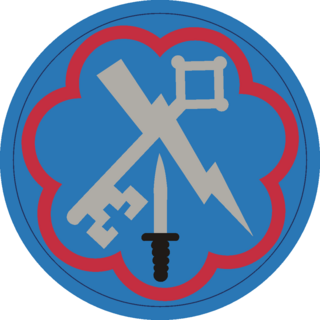 W
WThe 207th Military Intelligence Brigade (Theater) is a military intelligence brigade of the United States Army Intelligence and Security Command that conducts intelligence collection and exploitation in support of U.S. Army Africa (USARAF) and U.S. Africa Command (AFRICOM) in order to set the intelligence architecture for the theater, disrupt transnational and trans-regional threats, and promote regional stability in Africa while building and maintaining intelligence readiness. The 207th MIB is the first theater intelligence brigade dedicated solely to Africa.
 W
WThe Military Intelligence Corps is the intelligence branch of the United States Army. The primary mission of military intelligence in the United States Army is to provide timely, relevant, accurate, and synchronized intelligence and electronic warfare support to tactical, operational and strategic-level commanders. The Army's intelligence components produce intelligence both for Army use and for sharing across the national intelligence community.
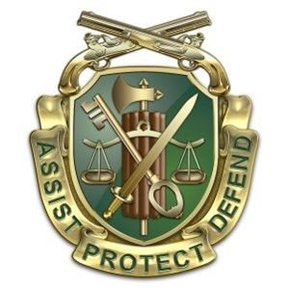 W
WThe Military Police Corps is the uniformed law enforcement branch of the United States Army. Investigations are conducted by Military Police Investigators or the United States Army Criminal Investigation Command (USACIDC), both of which report to the Provost Marshal General.
 W
WThe United States Army Nurse Corps was formally established by the U.S. Congress in 1901. It is one of the six medical special branches of officers which – along with medical enlisted soldiers – comprise the Army Medical Department (AMEDD).
 W
WThe United States Army Ordnance Corps, formerly the United States Army Ordnance Department, is a sustainment branch of the United States Army, headquartered at Fort Lee, Virginia. The broad mission of the Ordnance Corps is to supply Army combat units with weapons and ammunition, including at times their procurement and maintenance. Along with the Quartermaster Corps and Transportation Corps, it forms a critical component of the U.S. Army logistics system.
 W
WThe United States Army Quartermaster Corps, formerly the Quartermaster Department, is a Sustainment, formerly combat service support (CSS), branch of the United States Army. It is also one of three U.S. Army logistics branches, the others being the Transportation Corps and the Ordnance Corps.
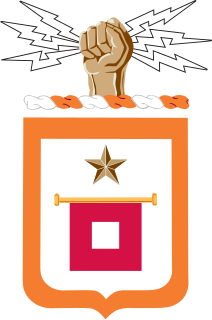 W
WThe United States Army Signal Corps (USASC) is a branch of the United States Army that creates and manages communications and information systems for the command and control of combined arms forces. It was established in 1860, the brainchild of Major Albert J. Myer, and had an important role in the American Civil War. Over its history, it had the initial responsibility for portfolios and new technologies that were eventually transferred to other U.S. government entities. Such responsibilities included military intelligence, weather forecasting, and aviation.
 W
W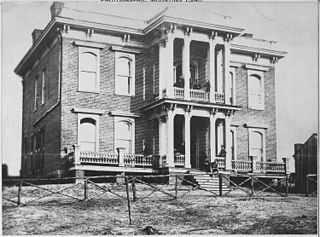 W
WThe U.S. Army Corps of Topographical Engineers was a branch of the United States Army authorized on 4 July 1838. It consisted only of officers who were handpicked from West Point and was used for mapping and the design and construction of federal civil works such as lighthouses and other coastal fortifications and navigational routes. Members included such officers as George Meade, John C. Frémont and Stephen Long. It was merged with the United States Army Corps of Engineers on 31 March 1863, at which point the Corps of Engineers also assumed the Lakes Survey for the Great Lakes. In the mid-19th century, Corps of Engineers' officers ran Lighthouse Districts in tandem with U.S. Naval officers.
 W
WThe Transportation Corps was established 31 July 1942 by Executive Order 9082. The Transportation Corps is a combat service support branch of the U.S. Army, and was headquartered at Fort Eustis, Virginia, but moved to Fort Lee, Virginia in 2010. It is also one of three U.S. Army logistics branches, the others being the Quartermaster Corps and the Ordnance Corps. The Transportation Corps is responsible for the movement of personnel and material by truck, rail, air, and sea. Its motto is "Spearhead of Logistics," and it is currently the second-largest branch of the Army.
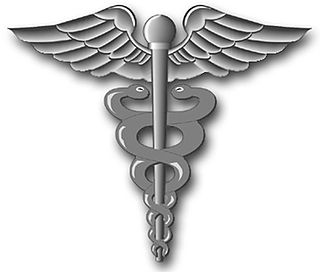 W
WUnited States Army Hospital Corps was organized in 1886 in order to recruit and retain competent medical enlisted personnel in the United States Army Medical Department for field service in the event of a foreign war. Existing Hospital Stewards were not trained to perform duties as field medical personnel. The Corps was recruited from enlisted men who had served one year in the line. After training they were transferred to a post where they would be assigned duties as nurse, cook or medical attendant. Privates having served twelve months in the Corps could be recommended for promotion. Having passed an examination they were promoted to Acting Hospital Stewards (Sergeant). Promotion to full Hospital Steward was possible after one year's service in an acting capacity and after having passed a second and more rigorous examination. The peak strength of the Corps was reached in November 1898, during the Spanish-American War, with about 6,000 men serving in the Corps.
 W
WThe U.S. Army Veterinary Corps is a staff corps of the U.S. Army Medical Department (AMEDD) consisting of commissioned veterinary officers and Health Professions Scholarship Program (HPSP) veterinary students. It was established by an Act of Congress on 3 June 1916. Recognition of the need for veterinary expertise had been evolving since 1776 when General Washington directed that a "regiment of horse with a farrier" be raised. It has evolved to include sanitary food inspectors and animal healthcare specialists.
 W
WThe Women's Army Corps (WAC) was the women's branch of the United States Army. It was created as an auxiliary unit, the Women's Army Auxiliary Corps (WAAC) on 15 May 1942 by Public Law 554, and converted to an active duty status in the Army of the United States as the WAC on 1 July 1943. Its first director was Oveta Culp Hobby, a prominent woman in Texas society. The WAC was disbanded in 1978, and all units were integrated with male units.